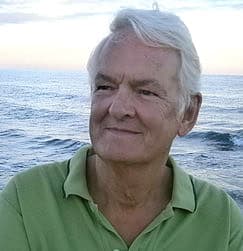An Introduction to Decentralized Identity with John Craddock
How would it be if we were in control of our own identities? In this webinar, first broadcast in June 2019, international identity guru John Craddock takes a look into the future as he discusses the proposals and open standards for decentralized identity (DID).
Excellent webinar, excellent presenter. A complex subject but explained very well. Neil W, Infrastructure Systems Administrator, UK
How many identities do you have for accessing work and social resources? In your list, there will probably be Office 365, Amazon, Gmail, your corporate network, Facebook, Instagram, X (formerly known as Twitter), and many more! Who controls those identities? Not you! In today’s world, we are forced to entrust multiple organizations that hold our identity; in many cases, secured by only a username and password.
What if YOU were in sole control of your identity, rather than relying on multiple organizations to protect it for you?
In this recording, John explains how multiple organizations are already working with proposals and open standards for decentralized identity (DID). This is a technical session that shows how underlying technologies are used to implement Decentralized Identity (DID). A self-owned identity will integrate seamlessly into your daily life and give you complete control of the information you share and whom you share it with.
The key to DID is cryptography
The core of this new technology is cryptography. Identity is cryptographically secured through the use of private/public keypairs. You can act pseudo-anonymously or publish your identity in an immutable transaction ledger. The ability to publish identity allows trusted organizations to issue claims about users that can be fully verified. A user’s identity can be digitally confirmed, and selected claims can be presented that are fully verifiable against the issuing authority.
An example: Meet Eric
As an example, imagine the issuing authority is the passport office and there is a user called Eric. Eric requests a digital passport, supplying whatever proofs of identity that are required by the government agency. The passport is issued and digitally locked to Eric’s identity. When Eric signs up for a bank account, he can supply his digital passport as verified proof of who he is. The bank can check that the passport is valid because it is signed by the passport office whose identity is fully verifiable. Crypto maths can get clever and Eric doesn’t have to always present his passport, he could simply present individual claims that are contained within his digital passport.
In this webinar you will learn how Eric gets his digital identity, and benefits from the new world of self-sovereign identity.
Discover the future of identity systems – view John Craddock’s Decentralized Identity webinar now!
On Twitter, Kirit P said:
Awesome webinar John. I will need to replay the recording 3 or 4 times, to digest it! Both the Blockchain and DID webinars were excellent and have helped clarify basic concepts – Thank you very much !
And R Chapman said:
The webinar today was great. John, you always explain things in a manner that even myself, who does more management that hands-on, can understand.
About John Craddock
 John Craddock is an internationally renowned identity guru and a Microsoft ‘Most Valued Professional’.
John Craddock is an internationally renowned identity guru and a Microsoft ‘Most Valued Professional’.
John has been involved in Microsoft solutions since the early days of Windows and Windows NT, and has focused on identity solutions since the first release of AD FS for Windows Server 2003. He has been involved in numerous IT projects for industry leaders including Microsoft, the UK Government, and multi-nationals. He is a globally acclaimed speaker who has presented at hundreds of events throughout the world.